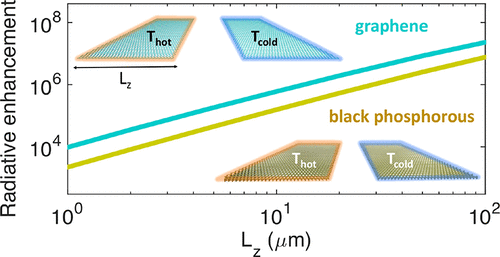Super-Planckian far-field radiative heat transfer between 2D materials
06/07/18 13:50
Very recently we have predicted that the far-field radiative heat transfer between two macroscopic systems can largely overcome the limit set by Planck law if one of their dimensions becomes much smaller than the thermal wavelength, which around 10 microns at room temperature. To explore the ultimate limit of the far-field violation of Planck law, we present in this work a theoretical study of the radiative heat transfer between two-dimensional (2D) materials. We show that the far-field thermal radiation exchanged by two coplanar systems with a one-atom-thick geometrical cross section can be more than 7 orders of magnitude larger than the theoretical limit set by Planck law for blackbodies and can be comparable to the heat transfer of two parallel sheets at the same distance. In particular, we illustrate this phenomenon with different materials such as graphene, where the radiation can also be tuned by a external gate, and single-layer black phosphorus. In both cases the far-field radiative heat transfer is dominated by TE-polarized guiding modes, and surface plasmons play no role. Our predictions provide a new insight into the thermal radiation exchange mechanisms between 2D materials.


